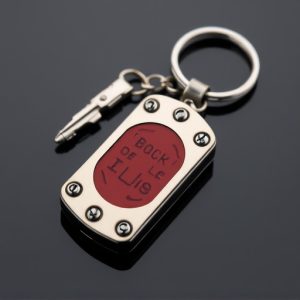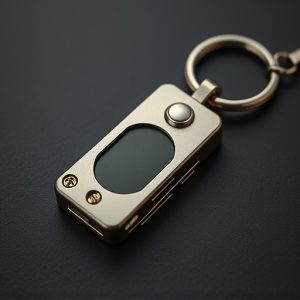Hidden Self Defense Keychain Legal Requirements: Global Checklist for Safety
The legality of hidden self-defense keychain tools varies globally, reflecting differing societal vi…….
The legality of hidden self-defense keychain tools varies globally, reflecting differing societal views on personal protection. While some countries strictly regulate these devices due to misuse concerns, others permit them under specific conditions promoting responsible use as a last resort. Choosing such a tool requires balancing functionality, reliability, and legal compliance. Buyers must create a compliance checklist, including verifying local laws, understanding self-defense definitions, and reviewing penalties. Manufacturers must adhere to industry standards and provide clear instructions for safe use to ensure both effectiveness and legality.
In today’s world, personal safety is paramount. Hidden self-defense keychain tools offer a discreet yet powerful means of protection. However, navigating legal frameworks regarding these devices can be complex, varying globally and even within regions. This article guides you through understanding the legal landscape surrounding hidden self-defense keychain tools, highlighting key components for safe and compliant designs. We’ll provide regional compliance checklists and essential tips for both consumers and manufacturers, ensuring safety and legality in this dynamic market.
- Understanding Legal Frameworks: A Global Perspective on Self-Defense Keychain Tools
- Key Components of a Safe and Legal Keychain Defense Device
- Regional Regulations and Compliance Checklists for Hidden Self-Defense Keychains
- Ensuring Safety and Legality: Tips for Consumers and Manufacturers
Understanding Legal Frameworks: A Global Perspective on Self-Defense Keychain Tools
The legal frameworks surrounding self-defense keychain tools, or hidden self-defense keychain tools, vary greatly around the globe, reflecting diverse societal views on personal protection and security. In some countries, these devices are explicitly regulated, with strict laws prohibiting their possession due to concerns over potential misuse and unforeseen consequences. Conversely, other jurisdictions allow for their use, often under specific conditions designed to ensure they remain a last resort for self-defense rather than a tool for aggression.
Understanding these legal nuances is crucial when considering the acquisition of hidden self-defense keychain tools. Local laws must be carefully reviewed to avoid unintended legal repercussions. Staying informed about regional regulations not only ensures compliance but also promotes responsible use, emphasizing that such devices are meant to empower individuals in dangerous situations rather than encourage vigilantism or unnecessary conflict.
Key Components of a Safe and Legal Keychain Defense Device
When considering a hidden self-defense keychain tool, it’s crucial to understand the legal requirements and key components that ensure its safety and effectiveness. The primary focus should be on functionality, reliability, and compliance with local laws. These tools are designed to provide discreet protection, often featuring innovative mechanisms like sharp blades, pepper spray, or stun functions. The most effective hidden self-defense keychain tools integrate these features into a compact, keyring-compatible design.
Safety features such as easy activation, precise control over the force applied, and built-in safety locks are essential to prevent accidental deployment. Additionally, legal compliance involves understanding local regulations on personal defense devices. Always check state and regional laws regarding hidden weapons, ensuring you select a product that aligns with these requirements. This diligence not only safeguards users but also prevents legal complications.
Regional Regulations and Compliance Checklists for Hidden Self-Defense Keychains
When considering the legal implications of carrying a hidden self-defense keychain tool, it’s crucial to understand that regulations vary significantly across regions. These small, discreet devices designed for personal safety must adhere to local laws and policies regarding weapons possession. Different countries and states have distinct rules, with some permitting concealed self-defense tools under specific conditions while others strictly regulate or prohibit them entirely.
A thorough compliance checklist is essential before purchasing and carrying a hidden self-defense keychain tool. This checklist should include verifying local and state laws, checking for any restrictions on similar devices, understanding the definition of legal “self-defense” in your region, and reviewing penalties for illegal possession. Staying informed about these regional regulations ensures not only legality but also promotes responsible and safe personal defense practices.
Ensuring Safety and Legality: Tips for Consumers and Manufacturers
When it comes to hidden self-defense keychain tools, ensuring safety and legality should be a top priority for both consumers and manufacturers. For consumers, it’s crucial to verify that such devices comply with local laws and regulations, as possessing or using an illegal weapon can lead to severe legal consequences. Always check your state’s specific rules regarding concealed weapons or personal defense tools before purchasing any hidden self-defense keychain tool.
Manufacturers play a critical role in maintaining safety standards by adhering to industry guidelines and conducting thorough testing. They should ensure that their products are designed with safety mechanisms in place, such as automatic lockouts or quick-release features, which can prevent accidental deployment. Additionally, manufacturers must provide clear instructions for safe handling and storage, ensuring consumers understand how to use the device responsibly without endangering themselves or others.
When it comes to carrying a hidden self-defense keychain tool, understanding local legal frameworks is paramount. With varying regulations globally, consumers and manufacturers must navigate a complex landscape. By adhering to regional compliance checklists and implementing safety standards, we can ensure that these innovative personal defense devices not only protect individuals but also remain within legal boundaries. Armed with knowledge, we can promote a safer world while respecting diverse legal perspectives surrounding self-defense keychain tools.


